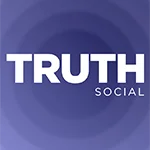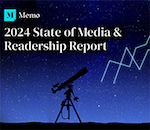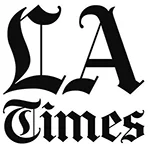Americans who are the most confident in their ability to spot “fake news” online are the most likely to fall for it, according to a recent study published in the peer-reviewed scientific journal Proceedings of the National Academy of Sciences.
The study, which focused on Americans’ ability to recognize misinformation and disinformation online, quizzed respondents’ competency in distinguishing between fake and actual news headlines. It found that many Americans appear to overestimate their abilities in telling the difference between legitimate and false news, and this overconfidence may be at least partially responsible for why individuals are vulnerable to the phenomenon—and worse, why they share fake news.
Participants were presented with a series of news headlines and asked to discern between which were real and which were fake. Those headlines, which appeared on Facebook’s news feed during the 2018 U.S. midterm elections, were published by actual mainstream as well as bogus news sources. Half the headlines were congenial to Democrats, and the other half were congenial to Republicans.
 An example of a headline shown to test respondents’ competency in distinguishing between fake and real news. An example of a headline shown to test respondents’ competency in distinguishing between fake and real news. |
The study found that most participants overestimate their abilities in identifying fake news content. While 90 percent of respondents claimed to possess above-average abilities in differentiating false from real news content, a whopping 75 percent fell short in their performance.
On average, respondents placed themselves 22 percentage points higher than their actual score. About one in five (20 percent) rated themselves 50 percentage points or higher than their score.
A second, web-tracking portion of the study analyzed respondents’ online activity and discovered that those who overestimated their false news discernment abilities the most were 14 percent more likely than the least overconfident to visit websites that spread false or misleading content and were 7 percent more likely than the average respondent to consume false news content.
In other words, not only do many Americans have a hard time identifying misinformation, there seems to be a correlation between one’s perceived confidence in spotting fake news and one’s vulnerability to it.
The study’s authors referred to the idea of fake news being a problem that individuals aren't personally vulnerable to as a “classic example of the third-person effect,” or the belief that mass media messages have a greater influence on others than on themselves. This overconfidence could make individuals more susceptible to exposing themselves to fake news and to accept it as fact, especially when those stories comport with their own political beliefs.
“Overall, our results suggest that people are often unaware of their own vulnerability to misinformation,” the study’s authors wrote. “Rather than suffering from known unknowns—for which individuals are likely to be more open to outside help—many instead suffer from unknown unknowns, which may cause resistance to improvement in the form of media literacy training or corrections. Targeting these confidently misinformed individuals may be the key to reducing much of the information pollution on social media sites. The question of how best to do so remains open.”
Respondents for the study, “The Perils of Overconfidence,” were drawn from two nationally representative samples of nearly 8,300 people selected by YouGov’s matching and weighting algorithm to approximate the demographic and political attributes of the U.S. population.
PNAS is the official journal of the National Academy of Sciences.


 Trump Media & Technology Group today reported a $58.2M net loss on $4.1M in 2023 revenues, a disclosure that drove its stock price down 22.6 percent to $47.96.
Trump Media & Technology Group today reported a $58.2M net loss on $4.1M in 2023 revenues, a disclosure that drove its stock price down 22.6 percent to $47.96. Barry Pollack, an attorney at Wall Street’s Harris St. Laurent & Wechsler, has registered Julian Assange as a client with the Justice Dept. “out of an abundance of caution.”
Barry Pollack, an attorney at Wall Street’s Harris St. Laurent & Wechsler, has registered Julian Assange as a client with the Justice Dept. “out of an abundance of caution.” Paramount Global to slash 800 jobs in what chief executive Bob Bakish calls part of an effort to “return the company to earnings growth"... Rolling Stone editor-in-chief Noah Shachtman is exiting at the end of the month due to disagreements with chief executive Gus Wenner over the direction the magazine is taking... The New York Times broke the $1 billion barrier in annual revenue from digital subscriptions in 2023... Press Forward is investing more than $500 million to strengthen local newsrooms.
Paramount Global to slash 800 jobs in what chief executive Bob Bakish calls part of an effort to “return the company to earnings growth"... Rolling Stone editor-in-chief Noah Shachtman is exiting at the end of the month due to disagreements with chief executive Gus Wenner over the direction the magazine is taking... The New York Times broke the $1 billion barrier in annual revenue from digital subscriptions in 2023... Press Forward is investing more than $500 million to strengthen local newsrooms. The majority of news articles are read within the first three days of publication, according to a recent report.
The majority of news articles are read within the first three days of publication, according to a recent report. The Los Angeles Times gives pink slips to 115 people or 20 percent of its newsroom staff... TIME is also laying off about 30 employees, which is approximately 15 percent of its editorial staff... The Baltimore Banner, which was launched by Stewart Bainum in 2022 after he failed to buy the Baltimore Sun, added 500 subscribers per day in the three days following Sinclair Broadcast Group's deal to purchase the Sun.
The Los Angeles Times gives pink slips to 115 people or 20 percent of its newsroom staff... TIME is also laying off about 30 employees, which is approximately 15 percent of its editorial staff... The Baltimore Banner, which was launched by Stewart Bainum in 2022 after he failed to buy the Baltimore Sun, added 500 subscribers per day in the three days following Sinclair Broadcast Group's deal to purchase the Sun.


 Have a comment? Send it to
Have a comment? Send it to 
Jun. 3, 2021, by Joe Honick
Important information, without question. The study and the results will no doubt result in smiling from the old and departed muckrakers of the past who knew how to take the news and muck it up for radio and newspaper ratings. Names like Hearst, Drew Pearson and a few others come quickly to mind. Bottom line: there probably is no way to change this unfortunate reality unless strong efforts begin in J-Schools and the way families talk to their children.
Despite these concerns, the information is important and should be broadcast.